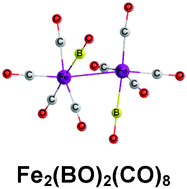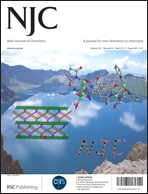Binuclear iron boronyl carbonyls isoelectronic with the well-known decacarbonyldimanganese†
Abstract
The recent (2010) synthesis of the boronylplatinum halide (R3P)2Pt(BO)Br by Braunschweig and coworkers makes interesting the chemistry of metal carbonyl boronyls isoelectronic with the binary


 Please wait while we load your content...
Please wait while we load your content...